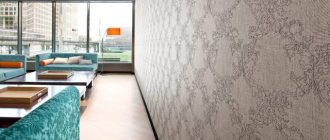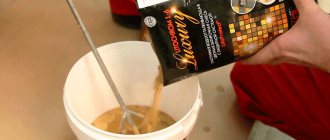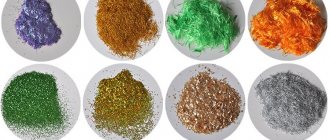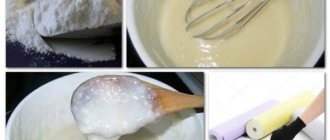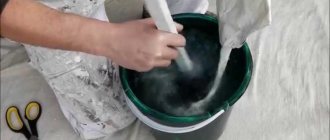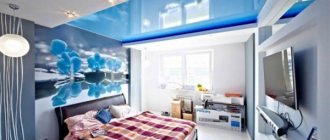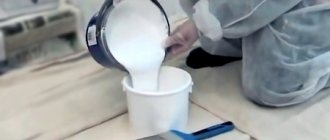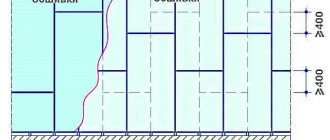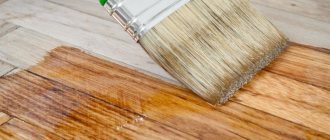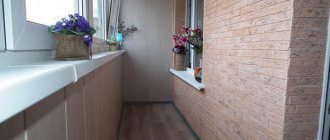Glass Magnesium Panel is a modern building material that has excellent quality characteristics and has the widest range of applications for exterior and interior finishing work.
Many builders consider glass-magnesium sheets (glass-magnesite sheets, SML, magnetite) a worthy alternative to drywall, since this material is superior to gypsum board in many respects. But most private developers and those who are going to renovate their apartment or house have a vague idea about the new building material for a number of subjective reasons.
Firstly, there is a lack of information, and builders are quite conservative people and often use drywall as a time-tested and familiar material, despite the fact that glass-magnesium sheets have qualitative advantages and cost-saving work.
Secondly, LSU is supplied to the Russian market from China, and unscrupulous suppliers used to try to bring cheaper, low-quality goods. As often happens, word of mouth did its job, and glass-magnesite sheets were used quite rarely for some time. But in recent years, very good quality material has appeared on the domestic market, from leading exporting enterprises, which meets all the requirements for modern finishing materials (GOST, TU), has quality certificates, and is capable of not only occupying its niche among similar building materials, but also to become a leader.
Glass-magnesium sheet: a modern and multifunctional analogue of drywall
At present, glass-magnesium sheet is a very popular material that is used in all areas of construction. It replaced universal drywall. LSU sheets are a modern material, which is a composite glass-magnesium plate. You will learn about the characteristics of glass-magnesium sheets, their features, areas of use, and much more from this publication. Gypsum fiber sheet: main types, price, dimensions, technical parameters (read more)
Magnesium glass sheet is a modern material that is actively used in finishing work.
Glass-magnesite sheet: getting acquainted with a new modern building material
Glass-magnesium sheets, or magnetite, are a completely new sheet material that is widely used in all areas of construction, although it appeared on the market not so long ago. The construction sheet is used for both internal and external finishing work. Magnelite, magnesite and glass-magnesite boards, magnesite panels, SML - all these are names for the same glass-magnesium material.
Glass-magnesite plates are easy to use, have good characteristics and low cost.
LSU panels are distinguished by their durability and excellent water resistance. The material is very similar in its properties to plasterboard, which makes it very competitive in the market for finishing products. Purchasing a construction material will not be difficult, since many companies sell it.
The popularity of glass-magnesium plates is explained by their excellent characteristics, ease of processing and reasonable price. Although the material can be easily cut with a jigsaw, saw, drywall knife and other similar tools, this does not mean that magnetite is weak. On the contrary, LSU board is durable and flexible. In addition, during processing of the material, virtually no dust or debris is generated.
On a note! When choosing a material, you must be guided by the method of use. For external use, SML premium is best suited. The cost of such panels is several times higher than the price of conventional ones, but the quality characteristics of glass-magnesium sheets allow them to easily withstand the effects of natural factors.
Composition of glass-magnesite plate.
SML panels are produced from magnesium binder and fiberglass mesh, which performs reinforcing functions. Magnesium binder is a type of concrete that is obtained by the interaction of magnesium chloride and caustic magnesite. Classification of LSU panels is carried out depending on the thickness of the sheet and individual quality characteristics. There are also LSU options that are used as decoration. This type of panels does not require additional finishing. Decorative sheets are available in the market in a wide range of colors.
Product marking
The first sheet of glass magnesite was manufactured in China, and to this day this country remains an unattainable leader in the production of this material, although products from domestic factories, which are mainly subsidiaries of Chinese enterprises, have begun to appear on the Russian market.
All material on the market can be classified into one of the following classes:
- Premium Lux or Premium with density characteristics from 1500 to 1750 kg/m3 (class A);
- Standard – from 1250 to 1500 kg/m3 (class B);
- Economy - from 1000 to 1250 kg/m3 (class C).
Also on the market there are products of lower classes D, E, F, G with a density of 500 to 1000 kg/m3.
Reviews about sml
In addition to density characteristics, different classes of products differ in strength, flexibility and adhesive surface characteristics. But you should always take into account an important pattern for this material: the higher the density, the higher the water resistance.
Therefore, for rooms with high or high humidity, only Premium or Premium Lux products should be used.
On the Russian market there are products with more understandable markings, for example “Premium 02”, which is similar to class A, and “Premium 01” is an analogue of class B. The Russian “Standard” is equal to the Chinese classes C and D and is recommended only for interior work exclusively in rooms without high humidity levels.
Products of lower classes are not produced in Russia due to low density characteristics, which do not provide the necessary strength to the constructed structural elements, as well as due to extremely low moisture resistance.
SML - material of the future, video:
Advantages and disadvantages of glass-magnesium plates
Until recently, plasterboard had no alternatives in the building materials market. But with the advent of glass-magnesium sheet, which is more technologically advanced, the situation has changed. The high level of performance indicators is explained by the composition of the material, which includes natural and organic components. Excellent strength indicators and equal structure density are achieved through firing at a temperature of 2000 °C.
LSU boards have special advantages over other similar materials:
- Versatility. The material is used in all types of finishing: slabs less than 6 mm thick are placed on ceilings, 6 mm sheets are suitable for walls, 10 mm building sheet is laid on the floor, magnetite 12 mm thick or more is used to create facade cladding and interior partitions.
- Strength. Magnelite plates can easily withstand any mechanical damage.
- Density. Budget material has a density of about 1 kg per m³, luxury sheets have a density of more than 1.5 kg per m³.
- Ease of processing. Manelite is easy to cut, does not crumble, does not break.
- Fire safety. Withstands temperatures over 1000 °C, prevents the spread of fire.
- Moisture resistance. The slab does not absorb water, does not swell, does not swell, does not change shape, and also does not rot, and is not afraid of mold and mildew.
- Environmentally friendly. Does not cause allergies.
LSU sheets have high strength and are distinguished by their versatility of use.
All these parameters indicate that, regardless of the application, glass-magnesium plates are the best option. The sheets are durable, they are stronger than drywall and cheaper than tiles. Despite all the advantages, the price of glass-magnesium sheets is quite affordable, which allows the material to be used without restrictions.
As for the disadvantages, they are typical for LSU sheets when low-quality material is used.
They appear like this:
- A decrease in quality, resistance to fire and moisture occurs due to the addition of asbestos, lime and chalk to the composition of the material by some unscrupulous manufacturers. This also leads to the appearance of fine dust, which is very dangerous for allergy sufferers.
- Low quality slabs emit salts that accelerate the decay process. This can have a negative impact on the metal structures of frames and formwork.
SML boards have such advantages as moisture resistance and fire safety.
Also, the disadvantages include the price per LSU sheet.
But the cost of the material is fully compensated by its excellent technical characteristics and parameters.
Production technology
The manufacturing process of glass-magnesium sheet begins with the preparation of a dry mixture, for which the above components are supplied by dispensers. Then the resulting substance is mixed with a pre-prepared solvent solution. Approximately 1.1 - 1.2 liters of thickener solution are supplied per 1 kg of mixture. Another necessary mixture is the so-called “glaze”, which is used to achieve smoothness and strength of the outer (front) side of the LSU. Its composition includes magnesite mixed with a sealer without fillers, resulting in milk of magnesia. It is applied directly to the plastic matrix (substrate).
After receiving the mixtures, they begin to form the glass-magnesium sheet, for which a substrate is prepared, onto which a fiberglass mesh and molding mixture are supplied for rolling on an industrial line.
After which the “pie” from the raw layers is pre-formed, dried, then edges are trimmed, and one side is sanded. The first drying of the sheet material is carried out on the substrate. To do this, use a drying chamber with forced air circulation, which provides a constant temperature of 32-36 degrees Celsius. The process lasts 6-8 hours, then the product can be removed and placed on the edge. In this position it should stand for 24 hours at a temperature of 20-24 degrees Celsius. The readiness of this material for finishing edge trimming can be judged by its color. If the LSU has a light, creamy, almost white tint, then this indicates that the drying process went well.
This is followed by the final trimming of the edges, which is done on a machine. To keep the risk of defects to a minimum, specialists carefully monitor the condition of the cutting equipment used.
Glass-magnesium sheets: technical characteristics of SML
Typically, a magnesite plate consists of the following materials:
- expanded perlite – 5%;
- magnesium oxide – 40%;
- magnesium chloride – 35%;
- fine wood shavings – 15%;
- fiberglass – 1%.
Synthetic fibers are added to the composition as additional binders, and perlite significantly increases sound insulation characteristics. The main properties of glass-magnesium sheets: strength, hardness, fire resistance and moisture resistance. The material is resistant to fungi and mold, and is able to maintain its shape for a long time under the influence of a humid environment.
Glass-magnesite panels are resistant to the formation of fungus and mold.
This table will help you get acquainted with the parameters of glass-magnesium sheets in detail.
| Technical specifications | Meaning |
| Slab thickness | From 3 to 20 mm |
| Weight (for sheet 8 mm thick) | From 18 to 24 kg (weight depends on the class of material) |
| Bending resistance force (wet - dry state) | 17.2-22 MPa |
| Face hardness | 52.7 MPa |
| Waterproof | 95% |
| Frost resistance | 50 cycles or more |
| Sound insulation coefficient | 46 dB |
| Coefficient of thermal conductivity | 0.21 W/m |
| Fire resistance (for sheet 8 mm thick) | Capable of holding fire for two hours |
| Fire resistance | When heated to +1200 °C the fire does not support |
| Density | From 980 to 1050 kg/m³ |
| Humidity | From 9 to 11% |
| Wet deformation | No more than 0.34% |
| Temperature coefficient of linear expansion | Not measured |
As for strength, the material is quite dense, has a uniform texture, and does not delaminate during operation. Thanks to its increased density characteristics, it has increased wear resistance to mechanical damage and deformation loads.
Glass-magnesium plates: characteristics and features of the use of the material
Glass-magnesite sheet SML is very easy to process. The initial edge of the slab can be easily cut with a regular construction knife, after which the sheet must be bent in the opposite direction at the place where the cut was made. Then the bend is cut in the same way.
According to the flexibility criteria, the SML board resembles plasterboard, plywood, OSB, and DSP panels. Without moistening and heating, magnetite practically does not have this indicator.
Glass magnesite is a fairly flexible material, so it is easy to cut.
Due to their high level of moisture resistance, glass-magnesium boards can be used for treating rooms exposed to humidity: baths, saunas, shower rooms, swimming pools, as well as for any external finishing work. This construction sheet does not absorb water and does not change its structure, does not swell, does not crack from moisture during the operational period. According to laboratory studies, premium magnesite board does not change its properties even after 100 days in water.
Drywall: price per sheet, sizes, types of material (read more)
It should be noted that LSU sheets are environmentally friendly. To produce the material, only natural and natural substances are used that do not harm humans and the environment. Magnesite boards do not contain asbestos and other harmful components.
Magnesium glass plates are a very popular material today. This is primarily due to ease of installation. Magnelite is ideal for installation on both plasterboard profile systems and wooden frames. Fastening is carried out using self-tapping screws MN or TN 25-65. For these purposes, you can also use screws with a sharp drilling tip SN and SB 25-40.
In the case of using premium class A slabs, you need to do light drilling under the screw head. For other types of this material, namely for classes B - G, this need not be done, since the screw fits perfectly into the surface of the magnesite sheet. The exceptional strength of the SML board allows installation even with the help of ordinary nails and a pneumatic gun, which is absolutely unacceptable when using drywall.
Due to the characteristics of the magnesite surface, there is no need to prime the surface before filling.
The use of magnetite can significantly save money and time, since the surface of the material does not require priming before puttying, facing with ceramic tiles or wallpapering. And the sound insulation of a room lined with magnesite sheets doubles.
On a note! The SML board can be coated with vapor-permeable dyes. If you use waterproof paint, the top layer may swell and crack over time.
Which is better: SML, GVL or GKL?
To answer this question, you should compare the characteristics of the materials:
- Glass-magnesite sheets have the best parameters. The products are very durable, can withstand severe temperature influences, and also require virtually no preparation before finishing.
- Gypsum fiber boards have good qualities, but are inferior to LSU in a number of indicators.
- Drywall. This material is suitable for interior use only. The product is wear-resistant enough for wall and ceiling cladding, but is easily damaged by mechanical stress.
It is not entirely correct to compare glass magnesite with gypsum fiber or plasterboard, since one or another material must be considered in relation to specific conditions and situations.
Glass magnesite products are gradually gaining popularity, which is associated with the expansion of production in the domestic market, but the cost of products is still high.
Variety of applications for glass magnesium sheets
Most often, glass-magnesium sheets are used to perform the following types of work:
- all types of external wall decoration, including stone cladding, ceramic tiles or stucco;
- internal treatment of walls for painting, wallpapering, tiling and clapboard or paneling, puttying;
- eliminating uneven surfaces of walls, ceilings and floors;
- creating interior partitions, regardless of the finishing;
As a rule, LSU sheets are used for interior finishing work.
- floor treatments for laminate or parquet;
- any architectural ideas for space decoration;
- finishing of baths, saunas, bathrooms and swimming pools;
- creation of banners, billboard advertising;
- arrangement of protective fireproof cladding near sources of spontaneous combustion;
- soundproofing works.
On a note! If plaster will be laid on top of the panel, it is better to install magnetite with the back (rough) side facing out. This will ensure a tighter adhesion of the cladding to the surface of the slab.
Finishing
Finally, it is necessary to plaster the joints and sand the dried areas. If the sheet is of good quality, then further work consists only of finishing:
- Laying tiles. No additional preparation is required.
- Wallpapering. When choosing a paper option, it is better to use a primer and use a special backing tape at the joints.
- Coloring. Any composition is suitable for this, without preparatory procedures.
The growing popularity of glass magnesite is largely due to the fact that the surface is adapted for any type of finishing.
Since the quality of the slabs can vary even from one manufacturer depending on the batch, applying a primer will never be superfluous.
How much does it cost to build a house with sml panels?
Magnesium glass panels are one of the most popular materials for building a modern home. It can be used all year round, and frame-panel construction does not require special foundation construction. The energy efficiency of such buildings is much higher, and construction costs are lower, because special equipment is not required to transport the material.
What is DSP: application, technical characteristics (read more)
As for the price of an LSU house, the maximum average cost per square meter is approximately 25,000 rubles. As a result, you get a living space that you can immediately move into with your furniture. Plumbing has already been installed in the building, an electrical network, water supply, boiler have been installed, and work inside the house has been completed. The minimum cost per square meter starts from 6,000 rubles, but in such a house you will still have to work, and you will also need to spend additional financial resources.
The cost of a house made of SML slabs will vary from 6,000 to 25,000 rubles per m².
The construction process can take from two weeks to a month. This is very convenient for those who want to purchase new housing in a short time. In addition, construction can be carried out at any time of the year. Using a magnesite board allows you to quickly, efficiently and inexpensively get your dream home.
On a note! LSU sheets can be used to finish the foundation. Fastening is done with glue or using anchors. But in this case, it is extremely important to choose the right type of material, otherwise magnetite will not only not withstand frost, but will also be deformed under the influence of moisture.
Installation rules
Conditions, features and standard solutions for installing LSUs are contained in the Standard Flow Chart.
Transportation and storage
Products are delivered by any means of transport. Individual sheets can be transported in dry weather without packaging or tent .
Unloading is carried out mechanically or manually. The sheets are carried in a vertical position, 2 pieces at a time , avoiding jerking, bending, and wave-like movements.
Store the material on a flat floor, in stacks up to 3.5 meters, providing protection from precipitation and direct sunlight.
Uncover
Only dry sheets are cut. Cutting order:
- The sheet is laid on a flat surface with the glossy side up. It is better to carry out cutting on a large table or a specially made stand.
- A metal ruler, corner or strip is pressed along the marking line; they will serve as guides.
- The knife is used to make several cutting movements until the reinforcing mesh is cut through.
- The sheet is shifted so that the cut line coincides with the edge of the surface.
- Break the sheet downwards.
- Cut through the second reinforcing mesh.
- Separate parts of LSU.
To cut round through holes, use a cutter or socket bit. The figured cut is performed with an electric jigsaw.
Painted sml: features and characteristics of the material
Painted glass-magnesium panels are the optimal material with an ideal ratio of price, quality and excellent aesthetic characteristics. The basis of this product is a regular magnesite plate coated with acrylic paints.
To add color, glass-magnesite slabs are painted with acrylic paint.
Painting is carried out using an industrial method - direct rolling of acrylic paint using steel rollers over the entire surface of the sheet. At the final stage, a protective varnish is applied to the top layer, which provides an increased level of wear resistance.
The cost of panels is affected by the following characteristics:
- material color;
- the number of sheets that are purchased;
- slab thickness;
- number of painted sides.
Sometimes the price of magnetite depends on the category of material. All these parameters together affect the production and painting process of sheets, as well as the consumption of paints and varnishes. You can buy LSU, painted on one side, from 1400 to 1680 rubles. per sheet. Magnelite, coated with paint on both sides, will cost from 1600 to 1900 rubles. per sheet.
Estimated price of glass-magnesium sheets
You can buy LSU panels for both interior and exterior decoration; they are used in building construction and other work. Depending on the area of application, as well as to make it easier for customers to choose, the material is divided into the following categories:
The cost of a glass magnesite board depends on the thickness of the product, strength and number of painted sides.
- “Standard” (SML sheet dimensions – 1220 by 2500 mm) costs from 460 to 730 rubles. for a unit. This material is most suitable for interior decoration of rooms with normal temperature and humidity levels throughout the year. Self-tapping screws are used for installation.
- “Premium” (SML slab measuring 1220 by 2440 mm) can be purchased for 580-960 rubles. per sheet. This magnetite is characterized by an increased level of strength, which allows it to be used for cladding the walls of low-rise buildings, installing internal walls and partitions, arranging a base for a soft roof and other indoor work. For fastening, experts recommend using stainless steel screws.
- “Superpremium” (sheet parameters – 1220 by 2440 mm). You can buy such LSU sheets from 950 to 1250 rubles. for one slab. This material is a specially released line with improved external surface parameters and the possibility of subsequent painting, lamination, plastic and veneer processing.
- “Interior” (painted magnesite slab measuring 1220 by 2440 mm). It is possible to buy painted LSU from 1290 to 1450 rubles. a piece.
The price for one sheet varies from 460 to 1450 rubles.
Types of material
LSU is usually divided according to characteristics into three main categories:
- Budget. The lowest class, including cheap panels with a thickness of 4 mm. Such products are not moisture- and frost-resistant, so they are used exclusively for indoor work and only in areas that do not experience heavy loads. The parts have low wear resistance and are therefore not suitable for high traffic areas.
- Standard. This is the most popular and common variety. The quality of the elements differs significantly from the previous version. The panels have many advantages, which means they can be used for processes not only inside, but also outside. The “Standard” class is presented in light shades.
- Premium Magnesite materials are of the highest quality, they have not only strength, but also the best water resistance values. The scope of application has no restrictions, so the elements can be used for facade and roof cladding. The peculiarity of such materials is their very high price.
In addition to the low price, poor quality of the product can be caused by a dark color and roughly cut edges of the sheets.
It is necessary to purchase glass-magnesite sheets in trusted construction stores, giving preference to well-known brands. The material must have detailed instructions on the label or in additional documents.
On a note! Serious manufacturers accompany their products with certificates that confirm not only the absence of harmfulness, but also fire resistance indicators. It is also taken into account that the presence of a non-woven coating on one side indicates a low class product.
Tips for choosing a quality glass-magnesium plate
Glass-magnesium sheets (GFS) have a significant number of reviews, but not all of them are positive. But the popularity of the material is not falling; on the contrary, the construction of many important government facilities is not complete without the use of magnetite. The main problem is that there is no marking on the material. Unscrupulous manufacturers take advantage of this by violating slab production technology.
There are negative reviews about glass-magnesium sheets due to incorrect definition of the scope of application. In addition, most consumers believe that LSU panels are a complete replacement for drywall. But this is not true, because only some types of stektomagnesium sheet can be fully used instead of plasterboard boards.
Since the price of a magnesite board is quite high, in order not to waste money, it is important to know how to distinguish a high-quality panel from a semi-handicraft material made from cheap components:
To choose high-quality material, you need to familiarize yourself with the recommendations of experts.
- Material color. LSU board of excellent quality has a beige or yellowish tint. Low quality material is most often white or light gray.
- Slab edges. Poor quality magnetite has uneven and brittle edges.
- Leaf base. Low-quality construction sheet is covered with non-woven material on the back side. This reduces the fire resistance of the material.
On a note! To check the quality, you can place a piece of glass magnetite in water for a couple of hours. If the slab is of high quality, the water will not become cloudy.
Interior or exterior wall decoration is constantly in great demand. Thanks to this, modern building materials will always appear on the market. At present, the latest finishing materials, including glass-magnesium sheets, are extremely popular.
Dimensions, advantages and disadvantages of gypsum plaster sheets for flooring (read more)
Thanks to modern creation technology and exclusively natural ingredients, magnesite board pushes into the background such materials as drywall and plywood. Excellent technical characteristics of glass-magnesium sheets (GMS) and price are the main advantages of this material. The peculiarity of such a construction sheet is that one side is smooth and polished, and the other is embossed.
Installation of glass-magnesium panels on walls
The technology involves doing all the work exclusively with your own hands without the involvement of specialists. To do this, you will need a standard set of tools and devices, the cladding area is prepared in advance, and all excess is removed.
The procedure for laying glass-magnesium panels for walls:
- Before starting work, the slabs are kept in the house. If outdoor activities are carried out, the sheets should be stored in a dry room. The fact is that parts that are too wet bend very much.
- A gap of half the thickness of the fragment is necessarily formed between adjacent elements. Only products of the highest class are not subject to temperature deformation.
- Fixation is carried out on the frame. To create the sheathing, it is recommended to use a metal profile (as for drywall).
Since the weight of LSU and gypsum board differs slightly, the frame for these materials is mounted the same - Special attention should be paid to processing LSU. It is better to cut slabs with a grinder or an electric jigsaw. To do this, the parts are laid on a flat base, after which markings are made. You can use a construction knife, but this method is suitable for thin sheets. Due to the presence of the reinforcing mesh, trimming must be done on both sides, otherwise there is a high probability of getting a too uneven edge, which will require modification.
If you don’t have a grinder or jigsaw at hand, then it is better to give preference to a hand hacksaw, since cutting through fiberglass with a construction knife is problematic. - The product is attached to self-tapping screws, which sometimes involves preliminary drilling and creation of a seat for deepening the cap.
- Wall panels are assembled according to a standard pattern. The parts are set taking into account the gap from the floor and ceiling and are fixed according to a pre-drawn plan. The pitch between fastening points varies from 20 to 35 cm.
LSU and gypsum board are mounted according to a similar scheme, the only difference is that special self-tapping screws with slots on the head are used for cutting the melt
Sheathing vertical structures can be much faster and easier. To do this, the slabs must be mounted on a special profile for LSU: the parts are placed in the starting strips, joined together with connecting moldings, and the corners are bypassed using special elements. This technology significantly simplifies installation, requires less time and allows you to carry out work without damaging the sheets.
On a note! The installation profile is best suited for decorated materials, as it does not allow for continuous cladding.
Specialized profiles are only good for installing laminated sheets in dry, heated rooms; they are not suitable for arranging facades and complex frames
